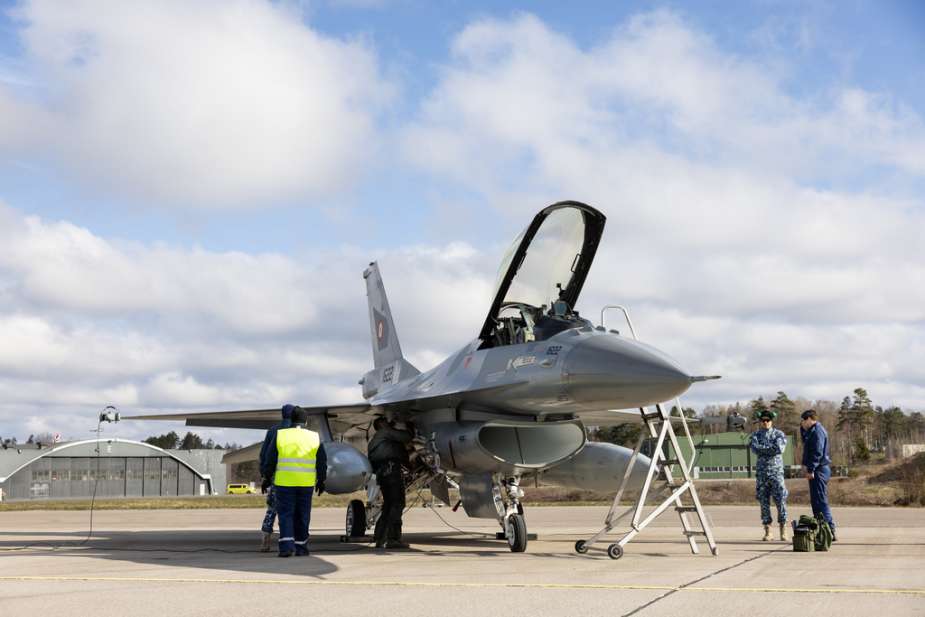Norway delivers three more F-16 jets to Romania to replace old Mig-21s
On April 19, 2024, Romania's Air Force received three F-16 Fighting Falcon aircraft from Norway. These aircraft arrived at the 71st "General Emanoil Ionescu" Air Base in Câmpia Turzii, marking a continuation of Romania’s program to replace its Soviet-era MiG-21 fighters. This is the second delivery of F-16s by Norway, with the first three having been delivered in November 2023 to the 86th Air Base "Lieutenant Aviator Gheorghe Mociorniţă" in Borcea.
Follow Army Recognition on Google News at this link

This procurement is part of a larger agreement concluded in June 2023, under which Romania purchased 32 refurbished Norwegian F-16 jets for €388 million. (Picture source: Norway MoD)
This procurement is part of a larger agreement concluded in June 2023, under which Romania purchased 32 refurbished NorwegianF-16 jets for €388 million (approximately US$418 million). The acquisition serves to enhance Romania's air defense capabilities, particularly for defending national and NATO airspace during both peacetime and crisis, as part of the Permanent Combat Service – Air Police (SLP-PA), operating under NATO command.
To date, Romania has received six of the 32 F-16 jets from Norway. The goal is to increase the fleet to a total of 51 F-16 jets by 2025, which will replace the older MiG-21 aircraft. Before being delivered, all Norwegian aircraft undergo a thorough servicing process to ensure they meet operational standards upon arrival in Bucharest. This includes a package of parts and services facilitated by Norway, aimed at maintaining the aircraft in operational condition.
Simultaneously, Norway has been updating its own air force capabilities, having phased out its fleet of F-16 fighters, which were the mainstay of the Royal Norwegian Air Force until their final decommission in 2022. Following the removal of the F-16s, Norway is now transitioning to Lockheed Martin F-35s, with plans to acquire 52 such aircraft.
Additionally, Romania has become a significant location for F-16 pilot training with the establishment of the European F-16 Training Centre (EFTC). This facility was set up by Lockheed Martin in collaboration with the governments of Romania and the Netherlands. Initially, the EFTC will focus on training Romanian pilots, but plans are underway to possibly expand its services to include Ukrainian pilots and other regional F-16 operators, according to announcements made by the center.
On April 17, 2024, Dutch Defense Minister Kajsa Ollongren reported that three additional F-16 fighter jets were transferred to this training center in Romania. This action is part of a coordinated effort by the Netherlands, Denmark, and the United States to assist Ukraine in response to the ongoing conflict with Russian forces. The center will be used to train Ukrainian pilots and ground staff in the operation and maintenance of these aircraft for combat purposes. The Netherlands will provide up to 18 F-16s for training purposes, maintaining ownership of the jets. Training is scheduled to begin this summer, with the first batch of F-16s expected to be operational in Ukraine by the fall.
The F-16 Fighting Falcon, developed by General Dynamics for the United States Air Force, initially served as an air superiority day fighter. Since production began in 1976, over 4,600 units of this multirole jet fighter have been manufactured. Designed for both air-to-air and air-to-surface combat roles under various weather conditions, the aircraft incorporates a frameless bubble canopy for better visibility, a side-mounted control stick to enhance maneuverability, and a reclined seat to lessen the impact of g-forces on the pilot. Additionally, the F-16 includes features aimed at reducing its radar visibility and is equipped with advanced avionics that support a wide range of weapons and equipment.
In operational terms, the F-16 performs a variety of functions including tactical air support, suppression of enemy air defenses, reconnaissance, and electronic warfare. It uses the AN/APG-68 radar system, which improves its ability to detect and track multiple targets simultaneously. Powered by a high-performance turbofan engine, the F-16 can execute various combat maneuvers. Continuous updates to different models of the F-16 have allowed it to remain in use with air forces worldwide, sustaining its operational capabilities.
- Hits: 2979
















